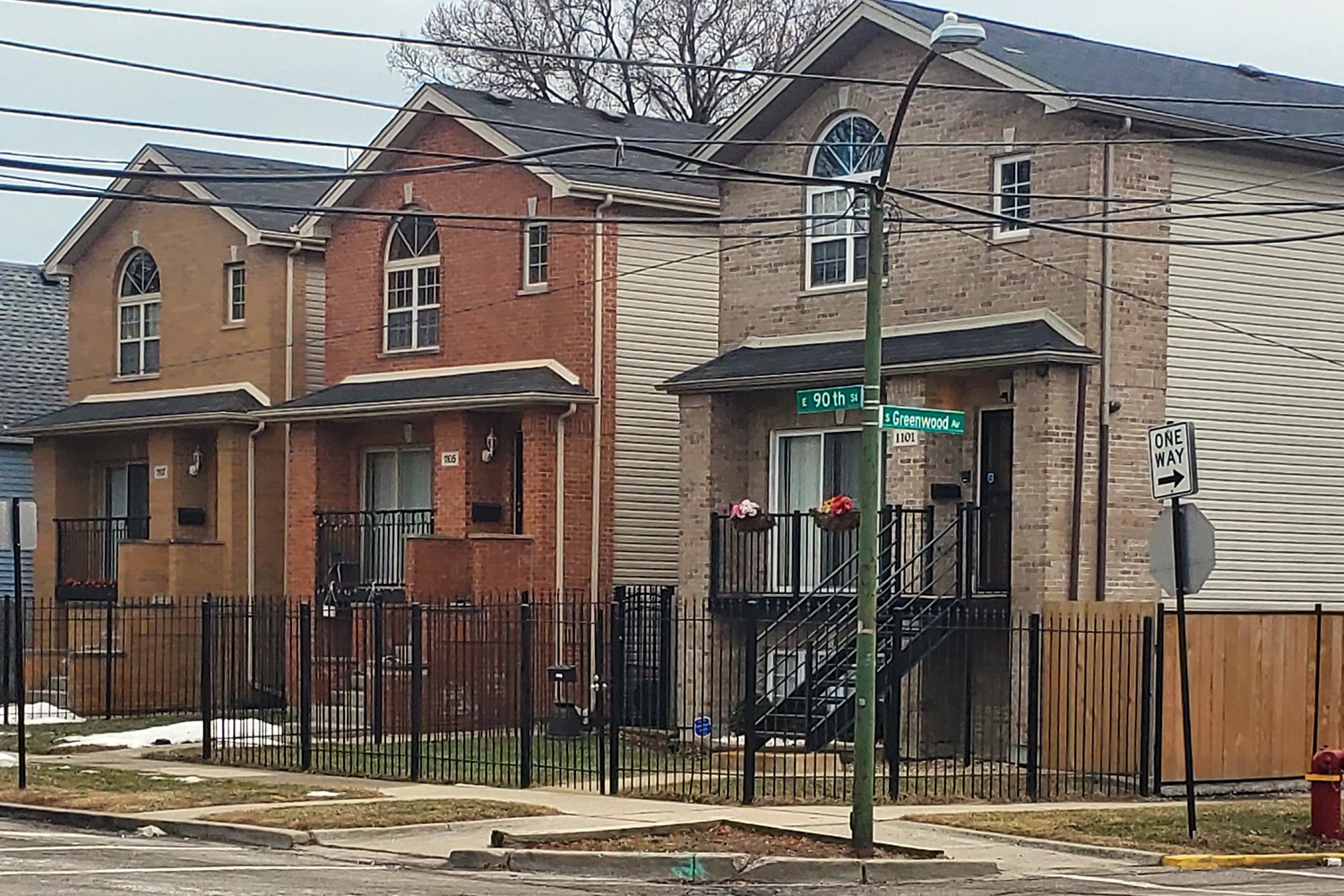It only makes sense to arrive in Burnside by train, at the Metra Electric’s Chesterfield stop, on 91st Street. Burnside is defined by railroads: the Illinois Central to the west, the Rock Island Line to the south, the New York Central to the east. They form a triangle of tracks so compact that Burnside is the smallest of Chicago’s 77 community areas: 970 acres in size, with a population of 2,000.
Burnside’s namesake is Ambrose Burnside, the muttonchopped Civil War general who also gave his name to sideburns. Not necessarily because of his military exploits, though. When the Illinois Central built a station here in 1862, Burnside was just beginning to distinguish himself on the battlefield. Perhaps more importantly, he had once served as cashier, then treasurer, of the IC.
Get off the train in Burnside, and you’re greeted by one of those no-nonsense signs so common on the South Side, laying out the rules of the neighborhood. “Welcome 2 the Burnside Community,” it reads. Below that is a giant “NO” followed by “Littering, Soliciting, Speeding, Car Repair, Loud Music, Drug Selling, Walking on Lawns.” It is signed “Thank You, Concerned Citizens of Burnside, Inc.” The woman who founded that organization has passed on, according to an aide to 8th Ward Ald. Michelle Harris.
The rules, though, are still in place. I walked around Burnside twice, and didn’t see or hear any littering, soliciting, speeding, car repair, loud music, drug selling, or walking on lawns. That’s because I didn’t see many people. It’s Chicago’s smallest neighborhood, also making Burnside one of its quietest, just a few blocks of middle-class brick bungalows.
Burnside also has a lot of churches. St. Mark’s Church of God in Christ, 9201 S. Avalon Ave., gave me my first clue to the neighborhood’s history. St. Mark’s copper dome is topped with a Ukrainian cross, two straight cross beams, one crooked. A cornerstone on the church’s addition is marked with another such cross, and the date 1962. The church was built in 1913, as Sts. Peter and Paul Ukrainian Church, to minister to immigrants from Dobra, Ukraine, who arrived in Chicago to labor on the Illinois Central.
“The Illinois Central RR had built a roundhouse and repair shops south of 95th St.,” according to a website devoted to the Dobra diaspora. “I am convinced that someone from Dobra was working in the I C employment office or was able to influence the hiring of his fellow immigrants from Dobra. It could have been that they were also hard working and dependable workers. Anyhow many of the people from Dobra who had immigrated to the coal fields of Pennsylvania came to Chicago after 1905 to work on the railroad. A few came directly from Ellis Island to Chicago.”
Sts. Peter and Paul moved to Palos Park in 1976, following the white flight of its parishioners. COGIC now seems to be the predominant denomination in Burnside. There’s also a Wallace Temple COGIC and a Charity Tabernacle COGIC, Julius T. McLean, pastor. The Jehovah’s Witnesses have a Kingdom Hall near Burnside Park.
Burnside is still an industrial community, which makes sense, because it’s so well served by railroads. The United Sugar Corp. operates a liquid sugar plant on Greenwood Avenue. The Naylor Pipe Co. manufactures enormous spiralweld pipes, piled on trailers in its muddy truck lot. Three years ago, a slag dump at Finkl Steel, on 93rd Street, generated an explosion that set fire to a house on Woodlawn Avenue.
On my second loop around Burnside, I met Eric Bass, coming out of St. Ailbe’s Catholic Charities, a senior apartment house on 93rd Street. Bass, who is 65, had recently moved back to Chicago from Georgia to live with his 91-year-old mother.
“You don’t hear too much about this neighborhood,” he told me. “I don’t have too much good to say about it, but I don’t have too much bad to say about it. It’s not much over here. Dead, if you ask me. Sometimes, that can be a good thing. Where I’m staying now, it’s quiet, it’s nice.”
Burnside has no restaurants, so Bass was headed to a “roach coach” — a mobile food truck — on Cottage Grove, near 87th Street. Along the way, we passed Hidiri House, a long-shuttered tavern with dust on its mailbox, and Drexel Counseling Services, a drug treatment center.
The roach coach was an El Ranchito Taco truck. 87th and Cottage, which is in Chatham, has all the basic businesses you’ll find in an outer neighborhood strip mall — Foot Locker, Metro by T Mobile, Rainbow, a currency exchange, Subway. It also has the only Garrett Popcorn Shop on the South Side. That’s the difference between a neighborhood, which has a social, cultural and commercial life, and a community area. The city’s community area map was drawn in the 1920s by the University of Chicago’s Local Community Research Community, and doesn’t always reflect modern Chicagoans’ concepts of their neighborhoods. Bass, for example, was unaware he lives in Burnside. (“I thought this was Chatham.”)
Back in the quiet of Burnside’s side streets, I met a man named Al, washing his car. He knew he lived in Burnside.
“Mostly I’m in Tennessee now, but I been here a long time,” he said. “My kids grew up here. This block, Greenwood, it’s a quiet, quiet block. I don’t want to say too much about it. I ain’t never had no problems.”
That’s about the best thing you can say about a neighborhood. Especially in Chicago.



